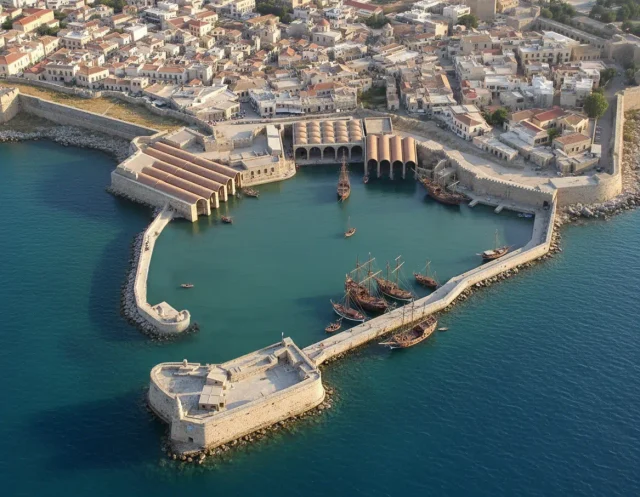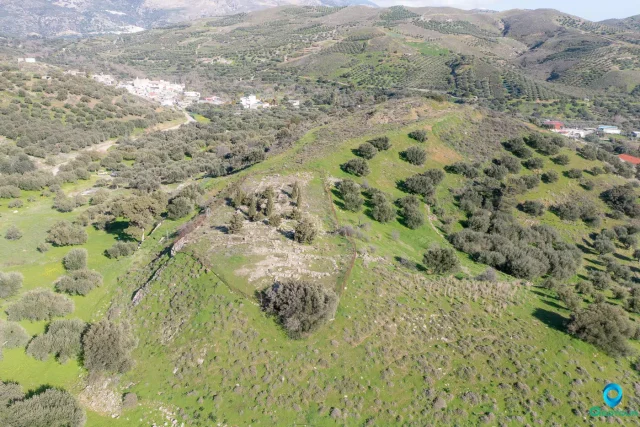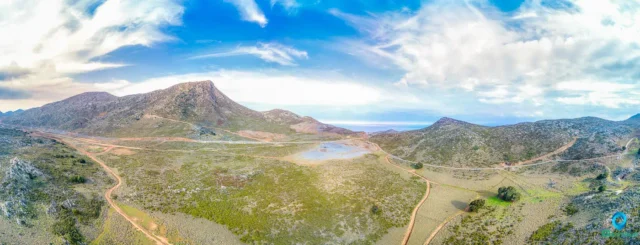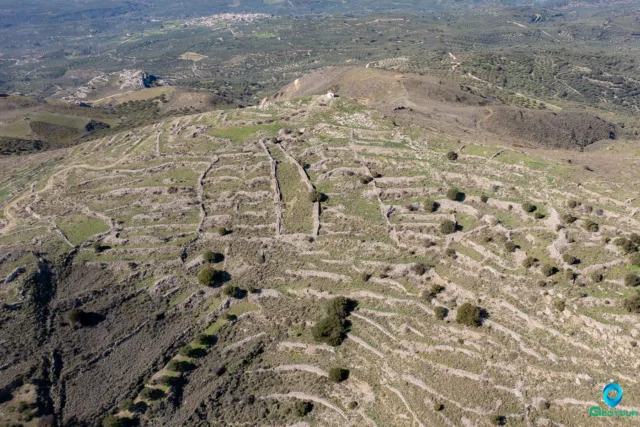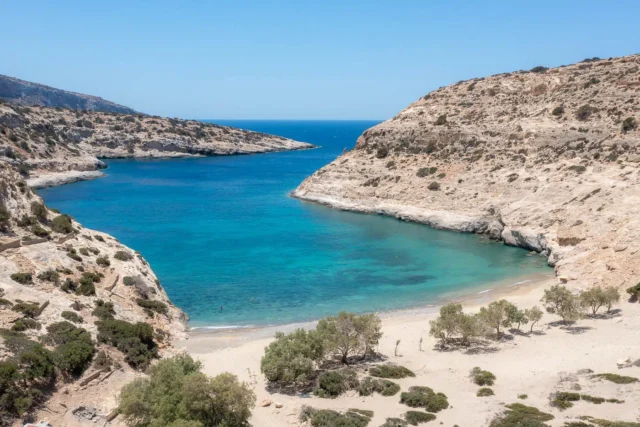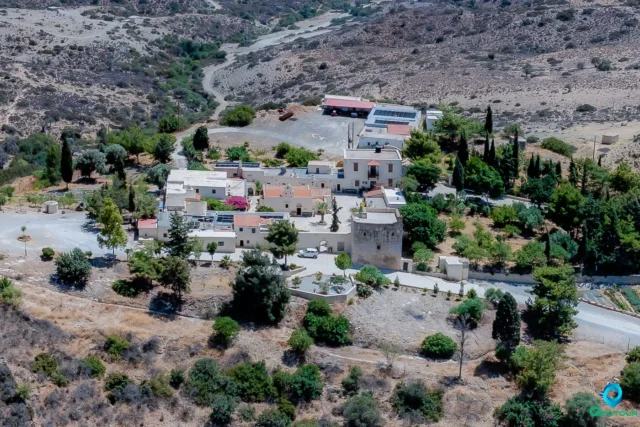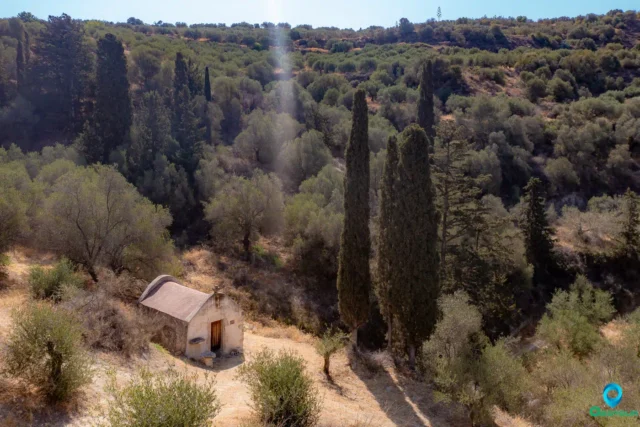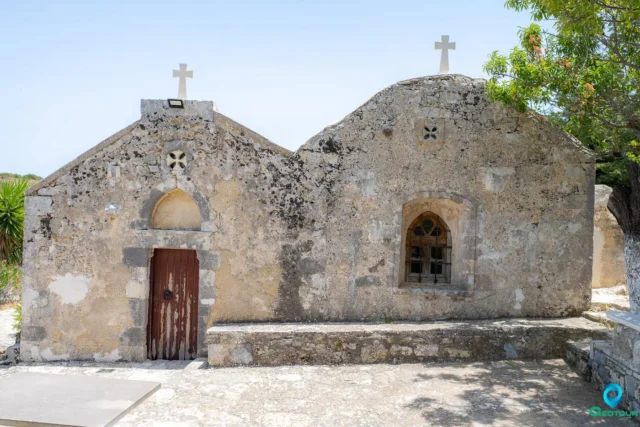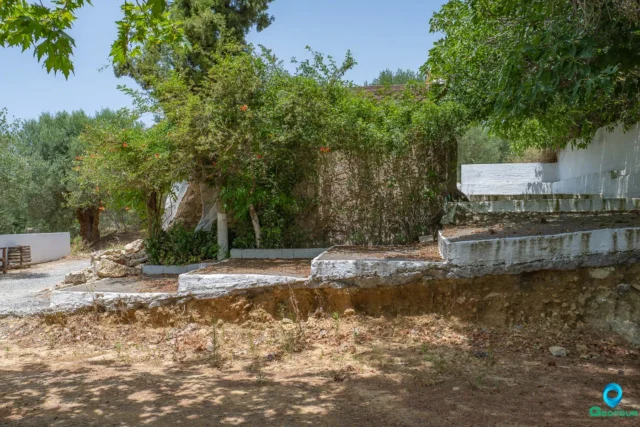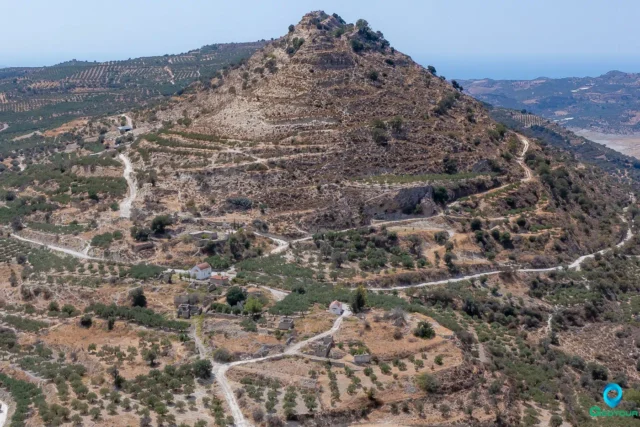415
listings found
Categories
Active filters:
The Venetian Harbor of Heraklion
The port's history begins in the Minoan era (Poros-Katsambas) and was founded as Rabdh el Khandaq by Arabs in 824 CE as a pirate base. Following Byzantine rule, Venetians developed it as Candia, their realm's capital. They constructed the massive Rocca a Mare (Koules Fortress, 1523-1540), a two-story fort with prisons and cannon ramparts, and the extensive Venetian Shipyards (Neoria) for galley repair. Ottomans added the Little Koules, later demolished in 1936 along with the Gate of the Mole and most Neoria during 20th-century modernization.
Kefali Chondrou
Located near Chondros Viannou, this multi-period archaeological landscape illustrates socio-political evolution in the Bronze Age. The complex uniquely demonstrates a transition from a sophisticated Neopalatial (MM IIIB-LM IA) country villa on the western hill to a large, post-palatial (LM IIIA1-2) town on the central hill following an earthquake around 1600 BCE. Excavations by Nikolaos Platon uncovered the 50-room town and significant ritual artifacts, including a triton shell and a rare plastic rhyton of a pregnant woman.
Syme (Symi) Viannou: Sanctuary of Hermes and Aphrodite
The Sanctuary of Hermes and Aphrodite at Syme Viannou, also known as Kato Syme, is an exceptionally long-lived and significant cult site in Crete. It is located on a plateau […]
The Koules of Riza
An Ottoman-era fortification from the 19th century, located east of Ano Viannos. It controlled the strategic Viannos-Pefkos-Kalamio pass, crucial for accessing the Lasithi Plateau. Part of a network of towers designed to suppress local uprisings, it allowed Ottoman garrisons to communicate with Ierapetra. The structure consisted of a 14x7m rectangular building with two 3x4m southern bastions. The ruins are still visible at the site, which also marks where German forces carried out mass executions in September 1943.
The Circus at Gortyn
A significant Roman spectacle complex at the southeastern edge of Gortyn, the provincial capital of Crete and Cyrenaica. Constructed in the Severan period (early 3rd century CE) along with the amphitheater, it was a key entertainment venue. Primarily used for circus games and racing, its importance is noted in mid-4th century texts like the Expositio totius mundi et gentium. The venue likely had looser seating arrangements than amphitheaters. Its creation was part of an intensive construction phase.
Strouboulas Massif
Located in Crete's Malevizi Province near Tylissos and visible from Heraklion, this mountain range features a prominent peak (798m) noted for its conical shape. Historically called "Stroggylo," Venetians named it after Stromboli. The range includes the Strouboulas plateau, south of the ridge, formed on limestone ("Tripoli" zone), leading to karstic features like the Tafkos tou Palmetis chasm, linked to Ottoman-era resistance. Vegetation is sparse, dominated by Kermes Oak due to overgrazing. A seasonal lake forms on the plateau, its water often reddish from soil runoff. Historical significance includes Minoan foothill settlements, the Timios Stavros chapel (Holy Cross) on the summit mentioned in 1415, possibly on an older site, and the Agios Georgios chapel ruins below, once a monastery dependency. Access to the peak involves a path from the plateau offering panoramic views.
Ancient Lykastos
An ancient city in Crete, located at the Vitsilia site near modern Profitis Ilias and known primarily from literary sources. First mentioned in Homer's Iliad's Catalogue of Ships, its mythological founder was Lykastos, a son of King Minos. During the Hellenistic era, the city was destroyed by the neighboring city-state of Knossos. Its territory subsequently became a point of contention, with Gortys seizing it and granting it to Rhaukos. Roman intervention in 185 BCE ultimately divided the lands between Knossos and Lyktos.
Mesi, Viannos
Mesi, a small village in the Kato Viannos municipality of Crete, Greece, is located at an altitude of 540 meters. The village's history is linked to the Ottoman-era settlement of Pera Mesi, which was tragically destroyed during a wedding celebration. Today, Mesi is sparsely populated, with residents primarily engaged in agriculture. The village has a relatively recently built church dedicated to both Prophet Elias and the Three Hierarchs.
Ancient Arkadia
Ancient Arkadia (Arcades) was a significant polis on Crete, located near modern Afrati. It contested Mount Ida's claim as Zeus's birthplace. Active from at least the 4th century BCE (noted by Theophrastus for environmental issues), it participated in the Lyttian War (c. 220 BCE) and minted silver/bronze coins inscribed "ARKADON" (c. 330-280/70 BCE). Numerous inscriptions reveal treaties with Gortyn, Miletos, Teo, and Eumenes II (183 BCE), plus Roman-era bathhouse regulations. Excavations uncovered houses, a cemetery with Minoan-influenced vaulted tombs, Geometric/Orientalizing period artifacts, local pottery, and a unique 7th-century BC Phoenician capital. Epigraphic evidence suggests an Asclepius temple.
The Settlement of Vitsilia
Vitsilia, an abandoned medieval village in Crete, provides valuable insights into fortified settlements of the era. Located in Monofatsi, Heraklion, the village was inhabited by villeins and free peasants. A 1387 document reveals details about its structure, including a northern wall, two entrances, and two towers. The village, with a naturally fortified position, likely served as a watchtower in earlier times. Archaeological evidence suggests the presence of houses, a church, and a cemetery. Despite its small size, with a population never exceeding 60, Vitsilia holds historical significance. Today, five houses and the Venetian-era Church of the Holy Cross have been restored.
Chersonissos, Herronissos (Ancient)
Chersonissos is an ancient Greek city located on the northern coast of Crete. It was inhabited as early as the Minoan period and continued to flourish under the Romans and Byzantine eras. The city served as the port of Lyttos, an inland city, and was an important center for trade and commerce. Archaeological excavations have revealed a number of significant structures, including a theater, early Christian basilicas, and harbor remains. The city's history is reflected in its coins, which feature various deities and symbols. Chersonissos is now a popular tourist destination, known for its beautiful beaches, ancient ruins, and lively nightlife.
Vathy
Vathy Beach, a secluded haven on Crete's southern coast, is located 79 kilometers southwest of Heraklion and 17 kilometers south of Sivas, near Cape Lithino. The beach, nestled at the end of a gorge carved by the Vathy stream, is surrounded by towering cliffs that create a lagoon-like setting. Historically, it was a pirate hideaway and a hermitage for monks from the Odigitria Monastery. The surrounding cliffs feature natural alcoves and shelters built by locals from Gergeri village who brought their flocks here to overwinter. The beach is generally calm, except during westerly winds, and has a sandy seabed with some rocks. It offers a tranquil escape, with few tamarisk trees for shade and no amenities. To reach Vathy, drive from Sivas to the Odigitria Monastery, turn right onto a dirt road heading west, and continue for about 10 kilometers. Despite its remote location, the beach can get crowded in August.
Moni Odigitrias monastery
Moni Odigitrias, a 14th-century Greek Orthodox monastery nestled in the Asterousia Mountains of Crete, stands as a testament to the island's rich history and resilience. Dedicated to the Virgin Mary "Odigitria" ("She who shows the way"), the monastery has been a place of pilgrimage and refuge for centuries.
During the Venetian period, Moni Odigitrias flourished as a center of learning and art. Its walls are adorned with frescoes by renowned Cretan painters, including Angelos Akotantos, who also crafted the monastery's iconic iconostasis. The monastery's collection of valuable icons and manuscripts further reflects its cultural significance.
Moni Odigitrias played a pivotal role in the Cretan resistance against the Ottoman Empire. It served as a sanctuary for rebels and a symbol of defiance. The legendary "Xopapas" (Father Ioasaph), a monk turned rebel leader, led the resistance from within the monastery's walls.
Today, Moni Odigitrias remains a working monastery, home to a small community of monks. It has undergone extensive restoration and welcomes visitors to explore its historic grounds, including a museum showcasing artifacts from its past. The museum houses a traditional loom, a stone oven, an olive press, and agricultural tools, providing a glimpse into the monastery's self-sufficient lifestyle.
Kalami, Viannos
Kalami, a historic village in Crete, strategically located in the semi-mountainous area of the Viannos municipality. Built during the Venetian or Ottoman period, it offered protection against raids and pirate attacks. Once a thriving community, Kalami was an important commercial center with a customs office, warehouses, and various professions. The village's economy was based on agriculture, with residents cultivating olive trees, cereals, fruit trees, and carob trees. After 1960, the focus shifted to early vegetables and bananas. Kalami also served as the main winter residence, with people moving to lower-lying "metochia" in the summer for farming. Today, Kalami is largely deserted, with most residents relocating to coastal settlements.
Gerokampos Tholos Tomb
The Lebena Gerokampos Tholos Tomb is an Early Minoan I-II (c. 3100-2600 BCE) archaeological site located near Lentas, on the southern coast of Crete, close to the ancient Minoan settlement of Lebena. The tomb, with an interior diameter of approximately 5 meters, is typical of tholos tombs, with a circular chamber built of large stones and a corbelled vault. The tomb also features several smaller chambers or annexes, which were added later. These annexes, along with the main tholos, served as spaces for burial and ritual activities. A large quantity of pottery, including pyxides, tankards, cups, and bowls, was found in the tomb. The tomb contained the skeletal remains of numerous individuals, providing evidence of collective burial practices. Other significant finds from the tomb include jewelry, tools, and figurines.
Agia Paraskevi in Aitania
Agia Paraskevi, a 14th-century Byzantine church near Aitania village in Crete, is adorned with well-preserved frescoes depicting saints like Vlasios, Titus, and John the Theologian, alongside biblical scenes. The church, accessed via a steep dirt road, features a single room and a sanctuary with unique motifs like the Melismos and Christ as the Great High Priest. Frescoes on the north and south walls portray various saints, including military saints, while the arch showcases scenes from the Dodekaorton. Local tradition recounts miraculous healing associated with the church, with a ritual involving holy water from a now-dried spring. Restored in 2003, the church's exterior is simple, with a buttress and a stone table used for bread blessing during festivals.
Agios Ioannis Theologos in Galatas
Byzantine-era, two-aisled church near the Minoan Palace of Galatas in Crete. Features an arkosolio and possible monastic remains. Frescoes in poor condition.
Kourtes, Gortyna
Kourtes, a deserted village in southern Heraklion, Crete, reveals Byzantine and Ottoman history. The name suggests a possible Byzantine military base. Located 3km south of Zaros, it comprises Pano and Kato Kourtes ruins, with the Three Hierarchs church remaining from Mesochori. The site includes Late Minoan tombs, an ancient Roman-era aqueduct with caves and a cistern, and remnants of a pottery kiln, reflecting its past agricultural and craft traditions. Historical records show Ottoman and Christian populations, with a gradual decline to its current deserted state. Churches include Agios Georgios, Three Hierarchs, and Christ.









